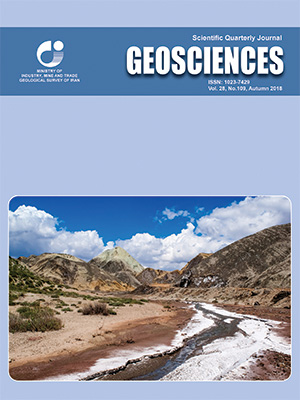Document Type : Original Research Paper
Authors
1 Ph.D. Student, Department of Geology, Faculty of Basic Science, Islamic Azad University, North Tehran Branch, Tehran, Iran
2 Associate Professor, Department of Geology, Basic Science Faculty, North Tehran branch,Islamic Azad University, Tehran, Iran.
3 Assistant Professor, Department of Geology, Basic Science Faculty, North Tehran branch, Islamic Azad University, Tehran, Iran
Abstract
The Aptian Shuaiba deposits, in southeastern of Persian Gulf due to having resistivity less than 6 to 1 ohm.m, is considered as low resistivity pay zone. On the basis of experimental studies 8 microfacies defined which settled in a carbonate platform of homoclinal ramp model that belong to outer, middle, inner ramp. Existence micro porosity in the microfacies is main reason for lowering resistivity. Various digenetic process are seen such as micritization and pyritization which have noticeable impact on declining resistivity. Lønøy method applied to address pore throat sizes which contain Intercrystalline porosity, Chalky limestone, Mudstone micro porosity. Pore systems are at class 3 Lucia. NMR logs and core data have been used for defining reliable water saturation and reservoir characterization. Results explain that decreasing of resistivity in pay zone is related to texture and grain size variation not being existence of moved water .Irreducible water estimate for this reservoir between 30 to 50 %.
Keywords
Main Subjects

